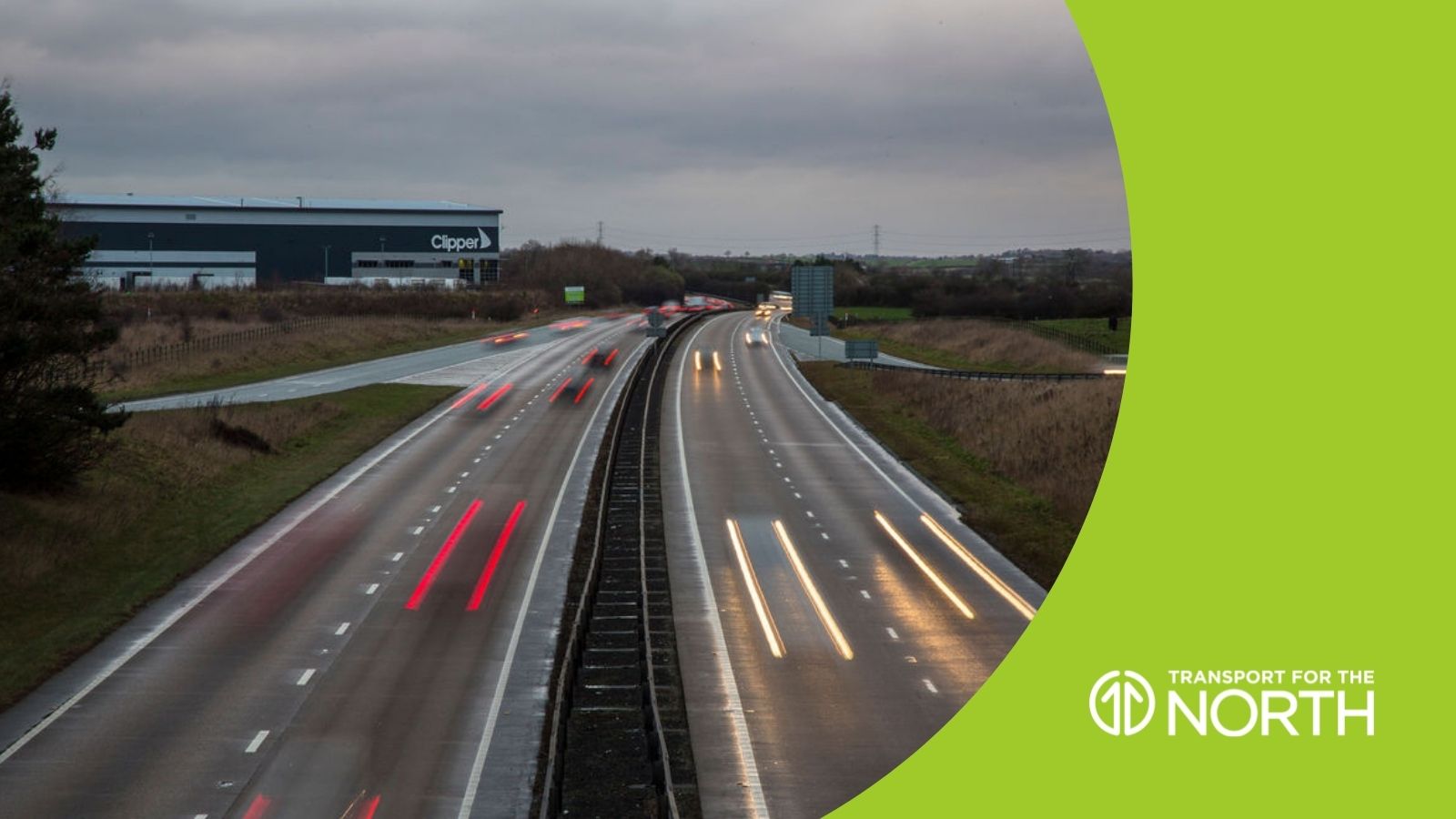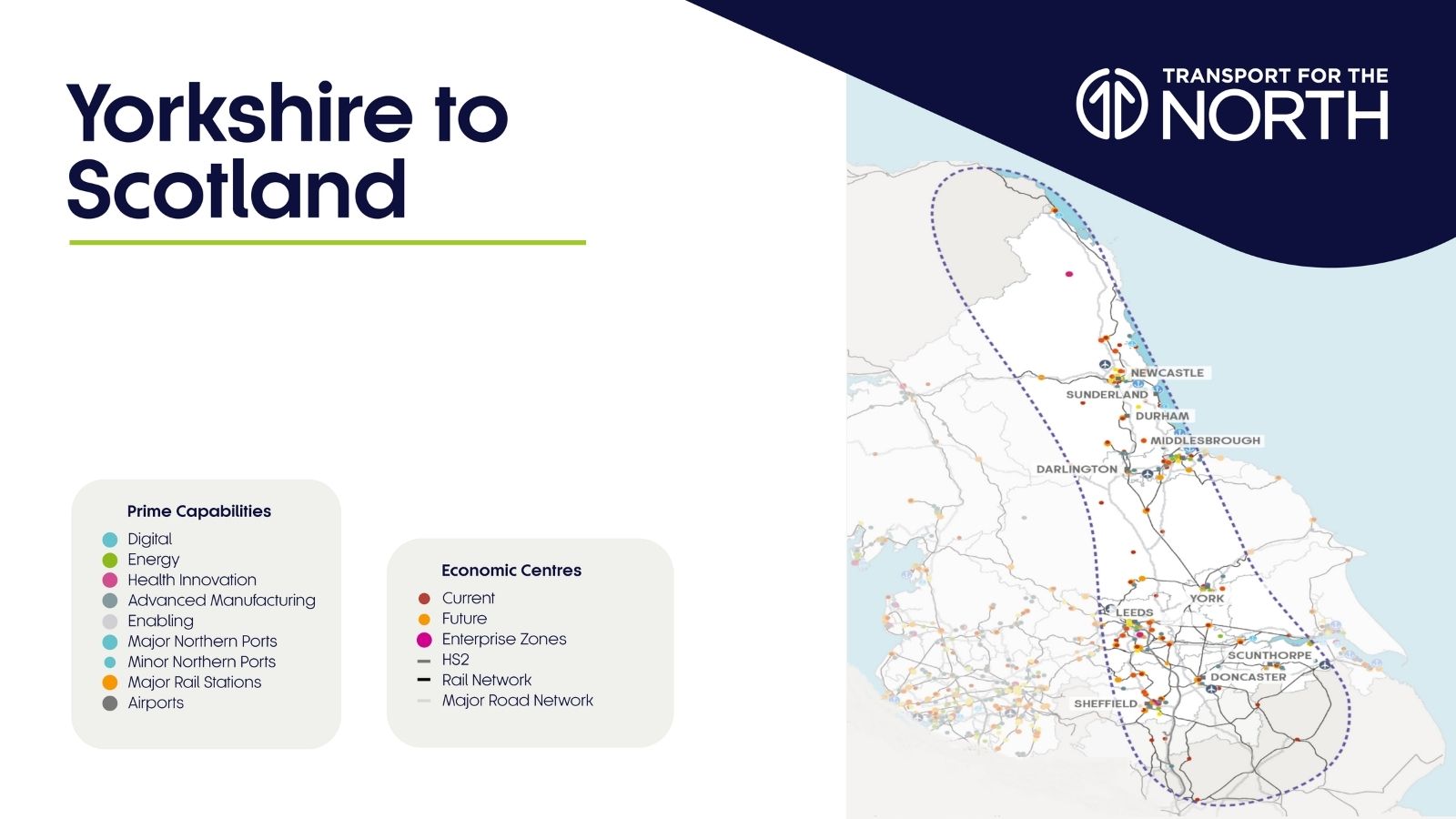At Transport for the North, we continue to build the evidence base and support projects that will improve connectivity throughout the North.
Our aim is to make all forms of transport easier and readily accessible in the region. The value of doing this for residents, communities and businesses is highlighted in our ‘Strategic Development Corridors (SDCs)‘ which allow us identify several key areas where connectivity can be improved.
In this Insight, we’ll be detailing which plans are in place for upgrading and improving links from Yorkshire to Scotland. The results of which will support our investment programme and provide a proposed pipeline of projects that would sustain economic growth in the North between now and 2050.

The Yorkshire – Scotland SDC covers a vast area with many vital ports (Blyth, Tyne, Sunderland and Goole) as well as several of the North’s major airports (Leeds-Bradford, Doncaster-Sheffield, Newcastle International, Durham Tees Valley and Humberside). It means carrying out improvements to this area could potentially provide a huge economic uplift to the North, attracting more businesses and investment to the area, as well as creating job opportunities for residents.
Our vision is to see transformed economic performance and improved opportunities across the region. This corridor is one of the most important corridors in the Northern region, given the quantity of significant national assets.
For example, the International Advanced Manufacturing Park, located in the North East, as well as the growing nuclear and renewable energy sector along the East coast, all heavily rely on strong transport links. As such, improving connectivity between Yorkshire and Scotland really is key.

The North East is one of these key areas, containing many major roads, airports and ports located in the Yorkshire to Scotland corridor. Currently, there is a requirement to develop A ‘Regional Evidence Base’ for the Major Roads Network (MRN) across the region is required, and TfN is leading in this exercise alongside the seven local authorities across Tyne and Wear, Northumberland and County Durham.
The MRN in the North East provides connectivity between the region’s major town/cities and economic infrastructure. The two main North and South connections – the A1 and A19 and two East-West connections in the A66 and A69, all forming part of the Strategic Road Network (SRN).
Through outlining and defining the MRN, the region has been able to identify the improvements that must be made. This would significantly speed up road travel between Yorkshire and Scotland, as well as reducing congestion in the North East’s major towns and cities.
International connectivity will also reap the benefits of these planned improvements, with the region’s airport (Newcastle International Airport) and five ports; Berwick, Blyth, Tyne, Sunderland and Seaham all situated within a mile of the MRN.

In the region, Transport North East brings together seven local authorities to provide strategy, planning and delivery services on behalf of the North East Joint Transport Committee (NEJTC), working tirelessly to implement its vision of “moving to a green, healthy, dynamic and thriving North East”.
Like TfN, Transport North East on behalf of the two combined authorities (North East Combined Authority and North of Tyne Combined Authority) in the region understand that without improved road networks, access to employment is severely restricted, ultimately stalling economic growth across the North.
The region’s first Transport Plan shares many priorities with TfN, including advancing the economy but doing this in a socially inclusive and environmentally sensitive way.

The North East is working with partners to make the area more economically competitive. This is being achieved by job creation (there is a target of 100,000 new jobs) with the region reacting to the challenges that Covid placed on the economy and society. Their estimates are the region requires a £100m fund over the first five years of the transport plan programme to help build the foundations to recover from the pandemic.
The NEJTC is committed to providing representation on the issue of transport. As well as giving voice to improving public transport, the NEJTC believes strategic road networks can better connect the North East with the rest of England, as well as Scotland. Unity on such issues will only prioritise and push the issue further.
Better connecting the network would support efficient trading opportunities across the North East, with the potential to expand the capacity and existing tested links in logistics operations of bulk material, containerised traffic, roll-on-roll-off and vehicle movements within the region’s ports.